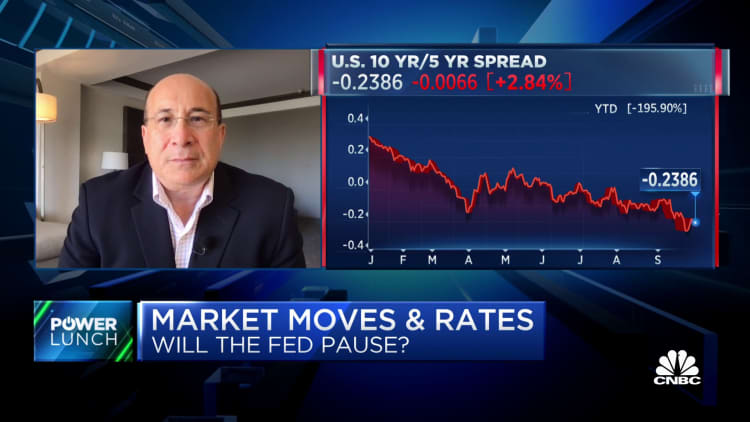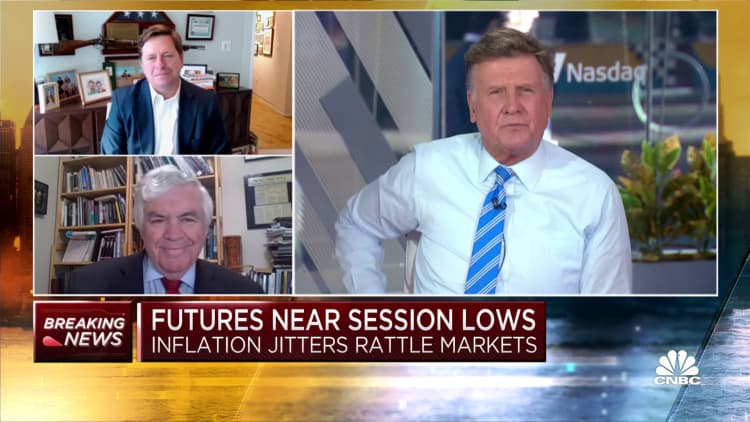
I wrote about the action of central bankers last week, suggesting that the rapid increase in interest rates, led by the U.S. Federal Reserve, would lead to a meaningful break in financial markets, whether at home or abroad sometime soon.
Well, it appears that day has come.
On Wednesday, the Bank of England, the historical model on whose practices modern central banking is based, intervened in the British bond market, reportedly, to prevent spiking "gilt" yields from sinking certain British pension funds. (Gilts are British bonds that are named for the gold-edged paper on which they were once printed.)
Unbeknownst to many of us, some British pension funds, which in total hold about $1.7 trillion in assets, used derivatives both to hedge a rise in interest rates but also to amplify gains coming from certain kinds of trades.
In other words, pension funds used borrowed money to speculate in financial markets.
As rates shot up, some of those trades collapsed in value, creating margin calls on those self-same funds, triggering a near-Lehman moment in U.K. financial markets.
The BoE stepped in and bought bonds, driving long-term yields down by over a full percentage point, and pushed U.S. 10-year yields down as well. That led to a reflex market rally in Europe and the U.S. Wednesday, which was all but erased a mere 24 hours later.
'An even bigger break' ahead
We are on the cusp of an even bigger break in the global financial architecture as Federal Reserve officials are now doubling down on the need to raise rates to fight what appears to be falling inflation, irrespective of the consequences.
Some Fed officials admitted that rates will continue to rise even amid a recession and that rate hikes won't stop until inflation falls to its stated target of 2%. Whether that means raising rates above the current perceived target of 4.6%, or keeping rates up for an extended period, remains unclear.
What is clear is something I have suggested for quite some time — that recession is a feature, not a bug, of Fed policy, echoing the policy decisions of the late Paul Volcker who in the early 1980s drove interest rates to 20% to induce an inflation-killing recession and tame inflation that had been raging for over a decade.

I have argued that the chosen historical analog is the wrong one to use as a guide to current policy.
For the historical record, while Volcker's draconian policies were successful in taming inflation, they also came with an associated and unanticipated cost even beyond the deep double-dip recession that ensued.
Rapidly rising rates in the U.S. put a strain on Latin American nations which had borrowed considerable amounts of money from U.S. commercial banks throughout the 1970s.
Those debts, largely denominated in dollars, were hammered by a combination of higher rates and falling domestic currency values, effectively and substantially increasing the debt service burden on those nations.
As rates rose sharply, Latin American nations threatened to default on their outstanding debts, an event that could have rendered many U.S. money center banks, effectively, insolvent. Volcker had no choice but to stop raising rates and start cutting them to relieve the strains on the U.S. banking system.
So, even under those circumstances the Fed raised rates until something broke.
They would do that again in 1987 (October stock market crash), in 1994 (Mexican peso crisis and Orange County bankruptcy) and would try in 1997 and 1998, but were stopped by the Asian currency crisis and the Russian debt default and subsequent, and massive, failure of Long-Term Capital Management. LTCM was a hedge fund that used so much borrowed money from U.S. banks to speculate on international bonds that its collapse threatened the solvency of the entire U.S. financial system.
Fed will have to stop soon
It appears that once again we are reaching — or may have already crossed — that threshold.
The near collapse of the British bond market may just be the canary in the coal mine, indicating that there are unknown or unrecognized pockets of leveraged speculative bets in both near and far-flung corners of the globe.
If I'm right, the forced purchase of British bonds by the Bank of England signals the first central bank to blink on tighter monetary policy but it will not be the last. It is only a matter of time now before the next shoe drops.
If history is any guide, and in financial markets it almost always is, the Fed will be forced to pause, if not pivot, on policy in the relatively near future.
They may deny it. They may not want to do it. They may refuse to even acknowledge the possibility of such a drastic change in policy.
But change they will.
I am reminded of a comment former Fed Chair Alan Greenspan made to me in a private conversation during the collapse of Long-Term Capital as he was being pressured to let the firm fail.
He said in theory he would agree that letting markets handle the failure is a good idea, but "in practice, it's not a social experiment I'm willing to undertake."
His words will ring true again in the days and weeks ahead.
— Ron Insana is a CNBC contributor and a senior advisor at Schroders.


